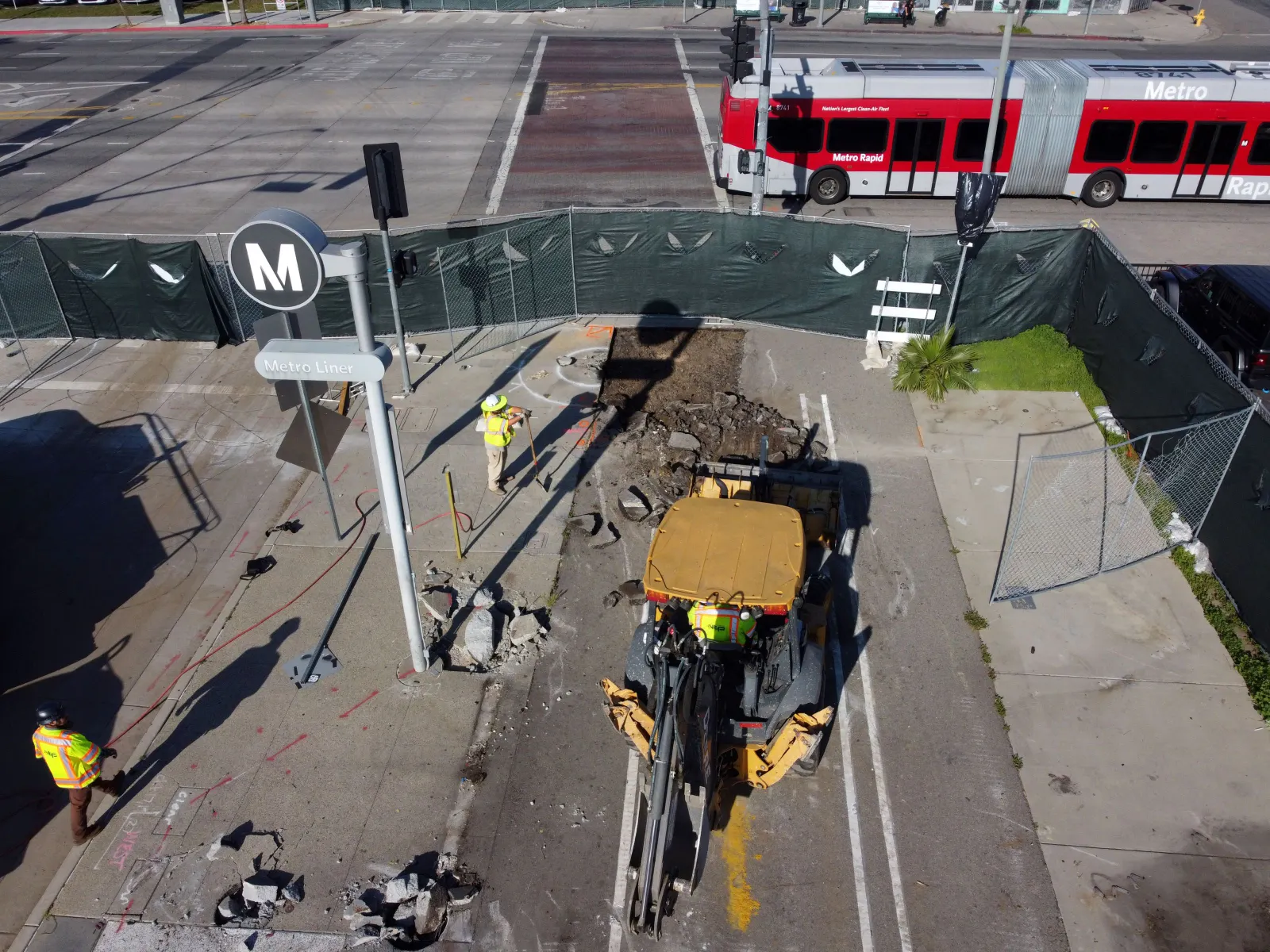
How contractors can mitigate the risks of joint ventures
This feature is a part of “The Dotted Line” series, which takes an in-depth look at the complex legal landscape of the construction industry. To view the entire series, click here.
Crews placed the final steel beam atop the $2.1 billion Buffalo Bills stadium in Orchard Park, New York, last month, a project overseen by a joint venture between Gilbane and Turner. In Los Angeles, a JV led by Stacy and Witbeck, Flatiron West and Modern Railway Systems also recently broke ground on the $668 million G Line busway overhaul.
These two projects are just the latest examples of how joint ventures are being used to deliver complex, multibillion-dollar projects across the country. By forming a JV, firms can combine resources to take on a single project together.
That allows the partners to pool bonding capacity, manpower and technical expertise. Such collaboration is gaining traction as project size and complexity continue to grow, said Mason Hester, attorney at Dallas-based Munsch Hardt.

Crews with Valley Transit Partners, a joint venture, start construction on the G Line busway overhaul project in the San Fernando Valley on March 28, 2025, in Los Angeles, Calif.
Courtesy of LA Metro
“As one example I’ve seen on massive DOT projects where a payment and performance bond is required with a very high dollar amount for the bond’s penal sum, it would be very difficult to find a single prime contractor with the bonding capacity to furnish such a bond,” said Hester.

Mason Hester
Courtesy of Munsch Hardt
These agreements, however, must be carefully structured to avoid costly disputes and should spell out the specific roles each participant will play in order to maximize chances of success, attorneys say.
In one case that Hester handled, for example, a vague contract sparked an expensive legal battle over whether the disagreement should be handled in court or through arbitration, and whether the joint venture’s officers were subject to those same terms. That kind of ambiguity, he said, could have been avoided with clearer language from the outset.
“A well-drafted JV agreement can often eliminate, or at least significantly reduce, the confusion, headaches and legal expenses that can result from a poorly drafted JV agreement,” said Hester.
Who does what?
A strong JV contract should begin with clearly defining the roles of each firm.
Most JVs are governed by a Joint Venture Agreement, or JVA, that outlines profit splits, scopes of work, dispute resolution processes and exit strategies, said David Podein, partner with Miami-based Haber Law. In some cases, especially on real estate-heavy developments, a letter of intent comes first to hammer out initial terms before a formal agreement is drawn up.
“The roles should not be left to be determined once the company is formed,” said Podein. “The determination on roles and responsibilities takes place during the negotiation stage.”
On construction-focused JVs, the split often depends on complementary skills, said Laura Fraher, partner at Barclay Damon, a Buffalo, New York-based law firm. One firm may bring geotechnical engineering knowledge while the other provides general construction capacity.

Laura Fraher
Courtesy of Barclay Damon
“Many times a joint venture is formed between two parties because they have different areas of expertise and in those circumstances the division of labor is quite obvious,” said Fraher. In circumstances where the division of labor isn’t so apparent, “the work should be divided cooperatively between the parties based on considerations such as strategy, respective strengths and availability of resources,” Fraher said.
Will you marry me?
This dynamic is why JVs are often referred to as a “marriage of convenience,” said Hester. But like a romantic union, those partnerships do not always go smoothly.
“So much of this can come down to the personalities and approaches of the management and their ability, or lack thereof, to have an approach of working together with their other JV members,” said Hester. “As opposed to throwing the other JV member under the bus.”
Because the JV is often jointly and severally liable for issues that arise during the project, owners do not need to prove which partner was at fault — just that the JV made a mistake. So, if one member points fingers, it opens the door for the owner to hold the entire JV accountable.
“It is up to the JV members to figure out which one of them is responsible for some or all of that payment,” said Hester. “The allocation of which is hopefully detailed in a well-crafted JV agreement.”
Deadlock resolution tools
To avoid these scenarios, many JV contracts include tiered resolution processes, such as requiring senior leaders to meet before escalating to mediation or arbitration, said Podein. Some also establish internal review boards composed of company executives, said Trent Cotney, partner and construction team co-leader in the Tampa, Florida, office of Adams and Reese.

David Podein
Courtesy of Haber Law
“We spend a lot of time upfront ironing out command and control and reflect that in the contract,” said Cotney. “The goal is to be fast and efficient.”
Boards like these are especially important on 50/50 ventures, where deadlocks are more likely. For that reason, Cotney said these agreements must have a clear deadlock resolution provision.
Well-crafted JV agreements often include buy-sell provisions, allowing one party to buy out the other in the event of a deadlock, said Podein. Other key clauses include terms governing capital calls, profit sharing, bonding responsibilities and termination procedures.
With design-build delivery methods and massive megaprojects on the rise, joint venture contracts are not going away anytime soon, said Fraher. To work best, parties must establish rules early, and meet responsibilities consistently.
“Joint ventures are becoming more common as projects are growing in complexity and scope,” said Fraher. “The most important thing is that the division of labor is agreed to clearly in advance and is well-documented to avoid any future disputes.”
Post a Comment
You must be logged in to post a comment.





